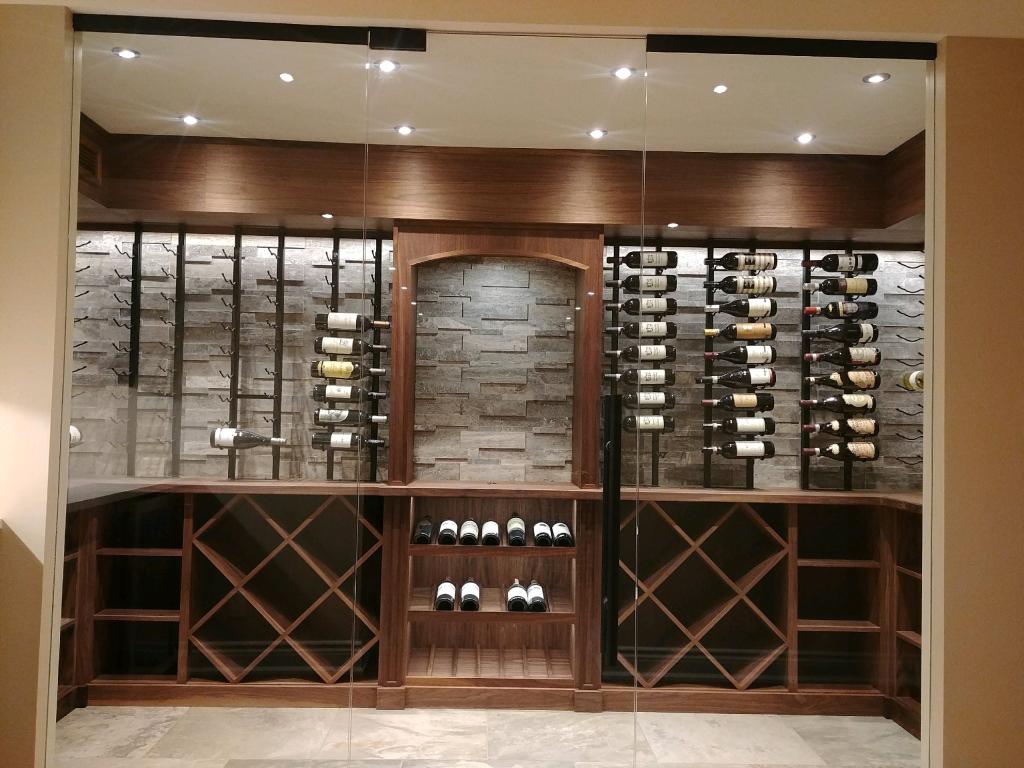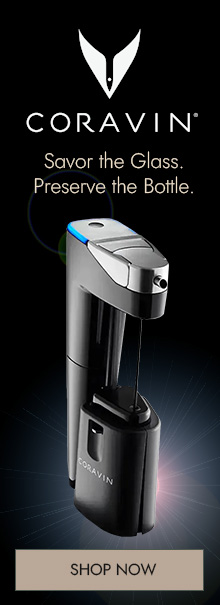Wine is perishable, so proper wine storage is critical to maintaining its delicate flavour and bouquet.
The manner in which wine is stored impacts the way it tastes when served. Collectors have no control over how their wine was made, but after purchasing the product it’s up to them to treat the bottles properly and in ways that will increase their flavour and value. This post will explore our beliefs on proper wine cellar temperature, humidity, lighting, racking angles, and how to manage vibrations and ventilate your wine cellar. If you’re serious about drinking fine wines, then the act of storing and handling your best vintages is a serious exercise, and one that is both science and art.
Wall mounted wooden wine racks, wine coolers, temperature and humidity controls, storage angles and decanters are just some of the equipment necessary to protect and perfectly age a high quality bottle of wine.
This detailed blog post will showcase Rosehill’s wine storage secrets and give insights into best practices for wine cellar maintenance.
What is the Best Temperature for a Wine Cellar?
 Maintaining the optimal temperature and avoiding wild temperature swings are the two most critical exercises for proper wine storage. A stable and pervasive chill is what makes a good wine cellar.
Maintaining the optimal temperature and avoiding wild temperature swings are the two most critical exercises for proper wine storage. A stable and pervasive chill is what makes a good wine cellar.
Wine can be stored safely from 40° to 65°F (4° to 18°C). The optimal storage temperature depends on the wine’s age and how long it will be stored. If the bottle will be opened within a year or two, a warmer temperature of 60° to 65°F (15° to 18°C) will speed the development of bottle bouquet.
If your intention is to store the wine for longer term, cooler temperatures are desired. Quality white wines are usually consumed sooner than red wines but can benefit by cooler storage. In this case the esters, or fruity character, disappear more rapidly at warmer temperatures.
What Happens When Wine is Stored at Room Temperature?
Storage at room temperature at 70°F (21°C) or higher will cause undesirable changes in the wine as various reactions are accelerated in the bottle, but at different rates. The result is a lack of balance in the aging process. Even fluctuations of more than 5° to 10°F (2° to 4°C) are undesirable.
 When wine is stored at room temperature, or placed in attics where the temperature fluctuates, the sensitive and perishable liquid can suffer heat damage. Wine is cooking at 80°F. When uncorked, a cooked wine may smell like a fruit stew or slightly burned. Tasting cooked wine is an unpleasant experience as the finish is absolutely ruined.
When wine is stored at room temperature, or placed in attics where the temperature fluctuates, the sensitive and perishable liquid can suffer heat damage. Wine is cooking at 80°F. When uncorked, a cooked wine may smell like a fruit stew or slightly burned. Tasting cooked wine is an unpleasant experience as the finish is absolutely ruined.
When wine is too refrigerated, by contrast, it can also suffer. When stored in too-cold frigid temperatures the liquid is subject to “slow aging” which means it doesn’t mature or gain anything during the aging process. Wine stored below 50°F hardly ages at all – it’s still a ripe juice when uncorked, years later. Is there sedimentation in the bottle? Cellar managers that encounter particles in wine stored at lower temperatures could be seeing tartaric acid crystals in the liquid.
Improper Wine Storage in Attics, Storage Lockers and Shipping Containers
 Wine stored in garages and attics is quite often subject to excessive temperature fluctuations. Wine in bottles stacked upright in boxes, placed upright in the cardboard box in a garage can lose its seal. The temperature fluctuations can break the seal of the cork, thereby exposing the wine to air or cause a pressure differential, which pulls air into the bottle. Oxidation: wine exposed to excessive oxygen will age faster.
Wine stored in garages and attics is quite often subject to excessive temperature fluctuations. Wine in bottles stacked upright in boxes, placed upright in the cardboard box in a garage can lose its seal. The temperature fluctuations can break the seal of the cork, thereby exposing the wine to air or cause a pressure differential, which pulls air into the bottle. Oxidation: wine exposed to excessive oxygen will age faster.
How to Maintain a Consistent Wine Cellar Temperature?
If you are just constructing a wine cellar there are plenty of things you can do to help keep the cellar cool in all seasons. During cellar construction, keep an eye on all places without insulation. There should be no gaps – just like insulating a house. Cellar owners minimize the potential “coolness” loss areas like windows and poorly insulated doors and ceilings. Top cellar owners concentrate on building a controlled environment for their prized wine collection.
If you have a wine cellar and are investigating its environment, simply put your hand on the walls and ceilings and feel for unseen heat sources. Restaurant wine cellars are notorious for also having computer servers or unseen ventilation ducts that either siphon the chill or vent hot air into the abode. Be on the lookout for air gaps or cracks in the wall or floor or ceiling too. If your wine cellar needs better cooling please view our selection of wine coolers with adjustable temperature controls, and wine cellar cooling units for full environmental control.
Regarding Wine Cellar Humidity, How to Control Moisture in Wine Cellar?
The way in which your wine is stored and handled has every bit as much to do with its taste as does the way it’s made. Preserving a proper stable storage environment for the liquid to age and become more deliciously complicated as it matures is the role of the wine cellar and manager.
Why Control Humidity in a Wine Cellar?
Although sometimes overlooked during the wine cellar-construction process, proper humidity is also very important. Humidity control prevents mold from forming (which happens naturally when a cellar is too humid) and protects the wooden corks in wine bottles from shrinking and drying out (which happens when the wine cellar is too dry).
 Moisture leads to mold and mildew growth. The glass and stainless steel used in modern cellars tends to be more “sterile” and these soulless materials don’t allow for mold to grow, like the organic substances of stone or wood. Since wine absorbs the aromas in its environment, the presence of mold impacts the flavor through the cork. Wine stored in cellars devoid of mold usually lack complexity. So, although many cellar managers believe it’s ideal to have mold growth within a wine cellar, it can be dangerous if it spreads into the walls of your home or restaurant business.
Moisture leads to mold and mildew growth. The glass and stainless steel used in modern cellars tends to be more “sterile” and these soulless materials don’t allow for mold to grow, like the organic substances of stone or wood. Since wine absorbs the aromas in its environment, the presence of mold impacts the flavor through the cork. Wine stored in cellars devoid of mold usually lack complexity. So, although many cellar managers believe it’s ideal to have mold growth within a wine cellar, it can be dangerous if it spreads into the walls of your home or restaurant business.
Moldy corks or even fungus-covered corks are not necessarily bad, as long as they still maintain the seal (but fungi-covered corks can become awkward talking points in wine cellar tours).
On the other hand corks that are too dry are deadly to wine. A deteriorated cork will lose its seal and this will lead to oxidation of the wine. When the seal is broken then oxygen will slowly leech into the bottle causing the conversion of the wine into its acidic form – vinegar. Wine that tastes bitter or like vinegar is usually the result of failed corking causing wine oxidation. (Tip to winemakers: screw-cap bottle closures do not require humidity in the wine cellar.)
How To Measure Humidity in a Wine Cellar
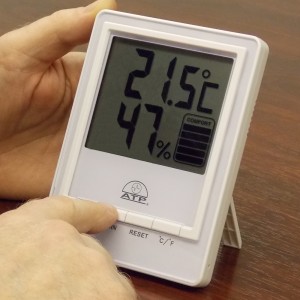 Relative Humidity (RH) is the percentage of vapor in the air at a given temperature. Storage humidity levels should ideally stay between 50% to 70%, not much higher, nor lower. When it’s too high, mold can form and bottle labels will be ruined. Excessive humidity does not affect the wine, however.
Relative Humidity (RH) is the percentage of vapor in the air at a given temperature. Storage humidity levels should ideally stay between 50% to 70%, not much higher, nor lower. When it’s too high, mold can form and bottle labels will be ruined. Excessive humidity does not affect the wine, however.
TIP: Wine bottles should be stored on their side to allow the wine to keep the cork wet, and this contact will discourage the cork from drying out should humidity conditions not be ideal. The ideal storage angle is another factor we’ll discuss later in this article.
Four Factors That Affect Wine Cellar Humidity
Three of the four factors that affect wine cellar humidity are beyond the control of the cellar manager:
- Geography
- Climate
- Season
- How well your cellar is constructed and insulated (vapor-barriers, ceiling insulation, etc.)
Rosehill offers advice on humidity gauges and humidification systems. Contact us if you have further questions – our experts will help you.
Regarding Wine Cellar Lights, How Dark Should A Wine Cellar Be?
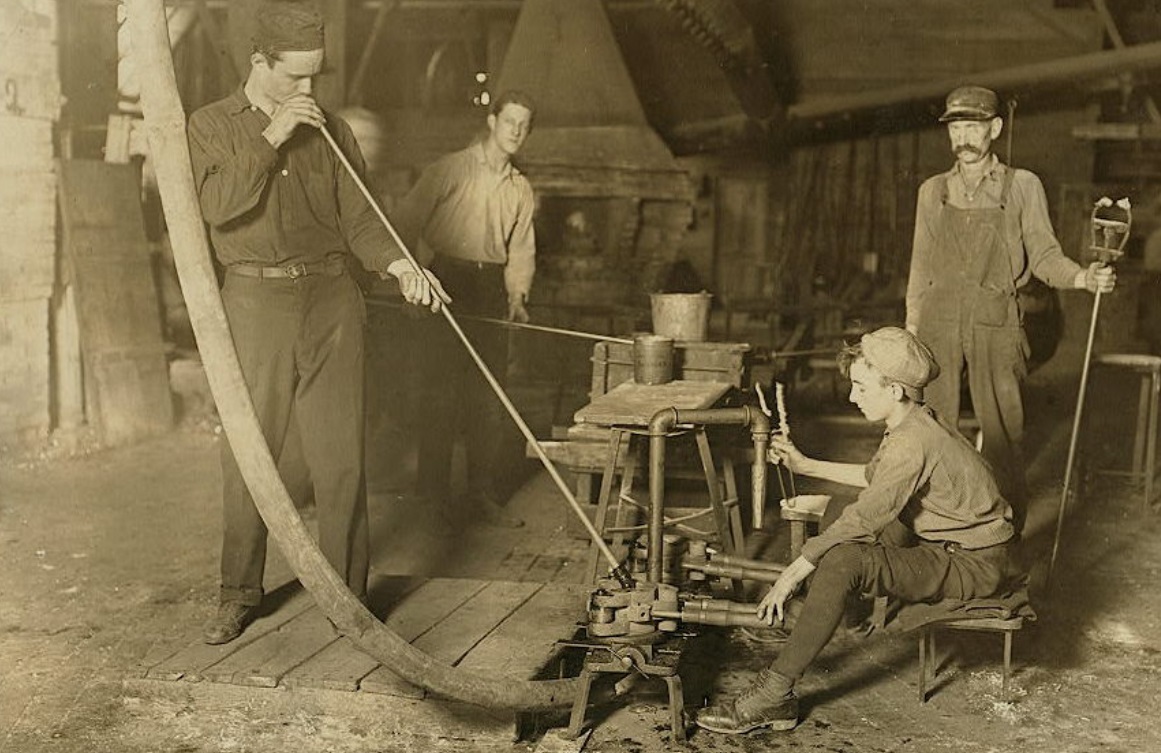 Ever since humans discovered glass making, and started putting wine in bottles, artisans have known that dark colored glass bottles help shield wine from sunlight, and wine tastes better when stored in dark glass away from the sun. Glasshouses in the late 1800s prized their dark glass bottles for wine and spirits, as contrasted to the clarity of clear glass bottles for compound medicines and cobalt blue bottles for poisons.
Ever since humans discovered glass making, and started putting wine in bottles, artisans have known that dark colored glass bottles help shield wine from sunlight, and wine tastes better when stored in dark glass away from the sun. Glasshouses in the late 1800s prized their dark glass bottles for wine and spirits, as contrasted to the clarity of clear glass bottles for compound medicines and cobalt blue bottles for poisons.
It wasn’t until later in the 19th century that scientists and winemakers understood ultraviolet light, and its destructive properties, and only after more experimentation was it revealed that ultraviolet light can penetrate even dark-colored glass! Wine cellars became even more important from that moment on as storing wine in dark conditions is essential to keep this perishable liquid from spoiling.
Ultraviolet light can cause oxidization of the tannins, causing an unpleasant aroma, ruining the wine. Sparkling wines are even more sensitive to light (all spectrums) and should be given extra care when stored in wine cellars with lots of foot traffic and fingers on the light switches. Delicate, light-bodied white wines run the greatest risk from light exposure and are often packaged in darkly tinted wine bottles that offer some protection from bright light. Wines packaged in clear, light green and blue colored bottles are the most vulnerable to light and may need extra precautions for storage.
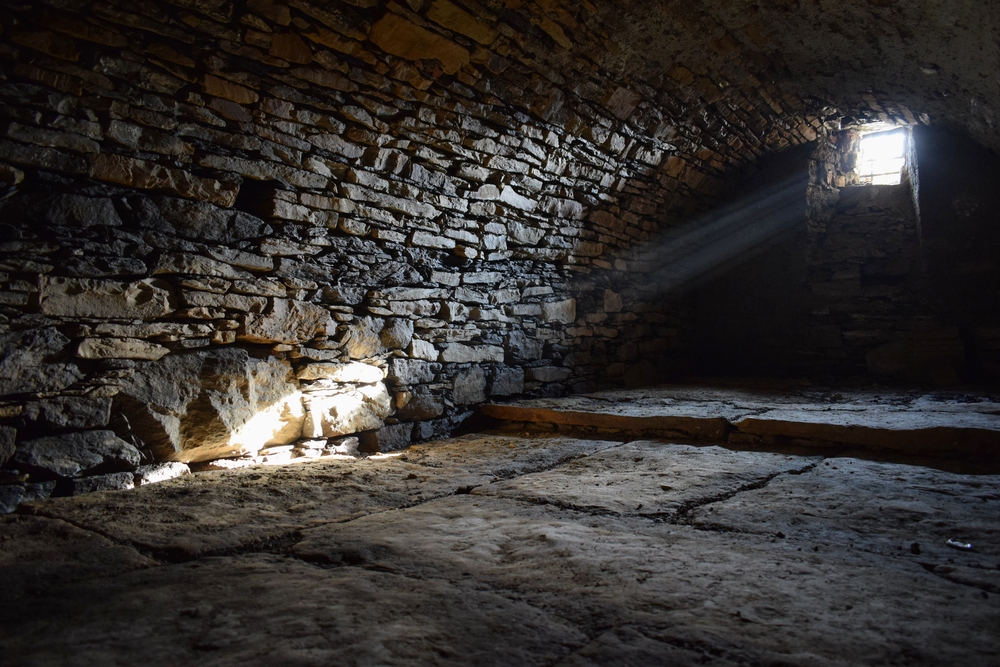 For example, the Champagne house of Louis Roederer uses cellophane wrap to protect its premium cuvee Cristal from light, the wine being packaged in a clear bottle. In the cellar, wines are stored in corrugated boxes or wooden crates to protect the wines from direct light.
For example, the Champagne house of Louis Roederer uses cellophane wrap to protect its premium cuvee Cristal from light, the wine being packaged in a clear bottle. In the cellar, wines are stored in corrugated boxes or wooden crates to protect the wines from direct light.
Buy a light timer. Whenever possible, put your cellar lights on a timer. If you ever forget to turn off the lights in your wine cellar, the timer will do it for you, keeping your wine safe. Also, when it comes to selecting the best lighting fixtures, top cellars utilize low-wattage surface-mounted lighting to minimize additional heat in the room and avoid any cool loss that may occur with holes for pot lights. LED lights come in a variety of shapes and configurations and can be made to look incredible in any space. While pot lights on a dimmer switch may seem like a good decorative idea, and one that is imminently functional, the pots are never insulated well enough and thus are not recommended for wine cellars. It should also be noted that low-wattage, non-heat emitting lights (LEDs) are better for wine storage than fluorescent lighting (see below).
Why you should never have fluorescent lights in your wine cellar?
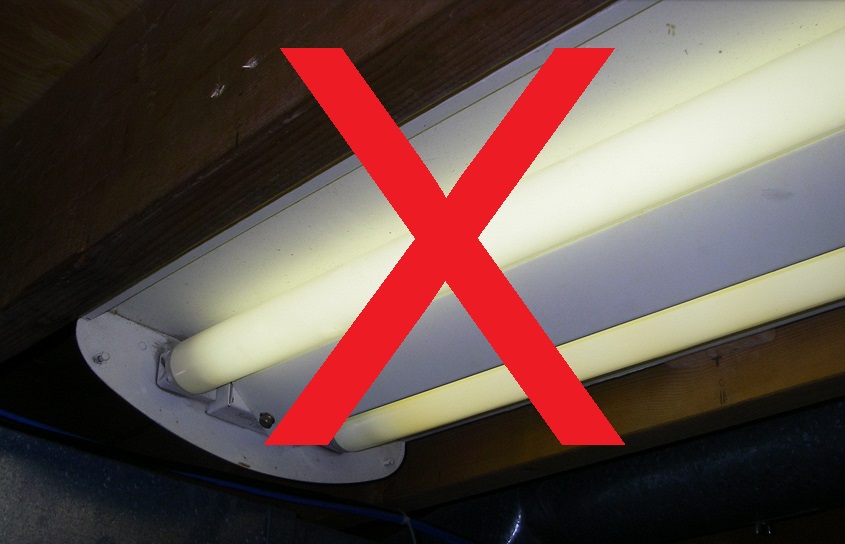 Fluorescent lighting emits significant amounts of ultraviolet light, which negatively impact wines on a photo-chemical level. UV light can age wine prematurely. Sunlight, fluorescent lights, and even some tungsten filament incandescent lighting can adversely react with phenolic compounds in wine and create “wine faults”. A wine fault is an unpleasant characteristic of a wine often resulting from poor wine making practices or storage conditions that leads to wine spoilage. Many of the elements that cause wine faults are already naturally present in wine, but at insufficient concentrations to be of issue in most bottles.
Fluorescent lighting emits significant amounts of ultraviolet light, which negatively impact wines on a photo-chemical level. UV light can age wine prematurely. Sunlight, fluorescent lights, and even some tungsten filament incandescent lighting can adversely react with phenolic compounds in wine and create “wine faults”. A wine fault is an unpleasant characteristic of a wine often resulting from poor wine making practices or storage conditions that leads to wine spoilage. Many of the elements that cause wine faults are already naturally present in wine, but at insufficient concentrations to be of issue in most bottles.
Glass wine cellars are hard to shield from bright lights. While modern glass wine cellars are lovely to behold, and offer guests and dining patrons much to contemplate while tasting wine, our wine cellar-design preference is to have no glass in the structure at all. If you read Rosehill wine cellar design page you will notice we shy away from using glass either in the wine cellar or on cabinet doors because of its poor thermal and photosensitive properties. We love our various designer clients, but they can sometimes use glass to a point beyond all practicality when it comes appropriate wine storage. Something to think about …
Wine Cellar Racking: What’s the Best Angle for Wine Cellar Bottle Racks?
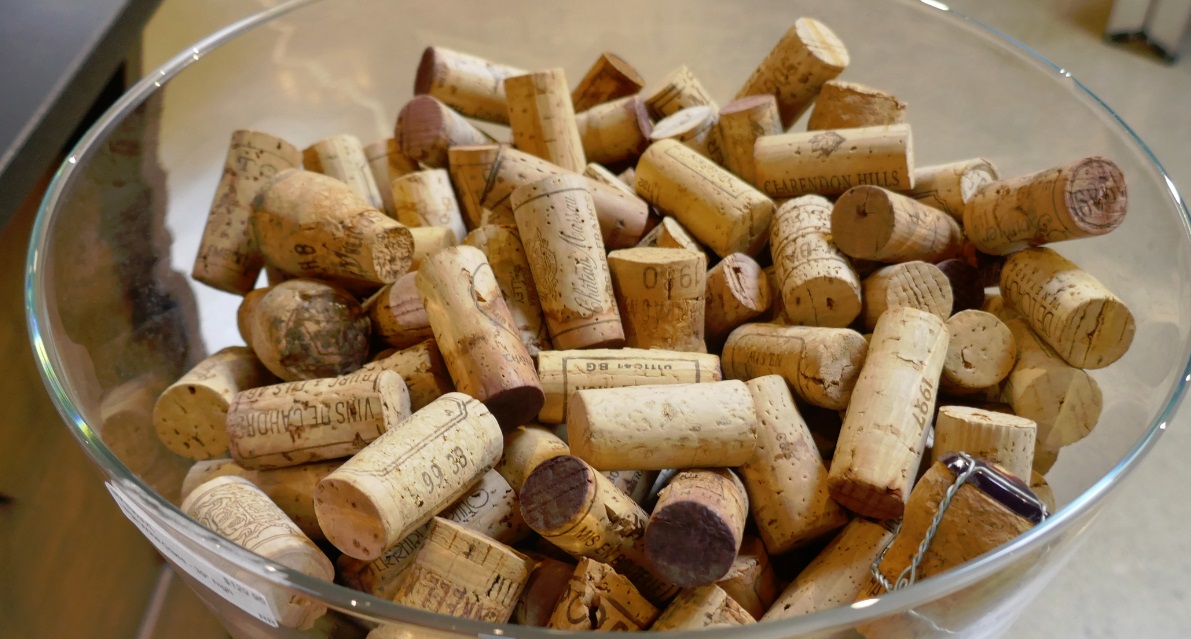 Wine corks are typically made from the bark of cork oak trees. The cork oak (Quercus suber) is native to the Mediterranean region, which is where most of the world’s cork supply is obtained. Because of its impermeability, buoyancy, elasticity, and fire resistance, it is used in a variety of products, the most common of which is wine bottle stoppers.
Wine corks are typically made from the bark of cork oak trees. The cork oak (Quercus suber) is native to the Mediterranean region, which is where most of the world’s cork supply is obtained. Because of its impermeability, buoyancy, elasticity, and fire resistance, it is used in a variety of products, the most common of which is wine bottle stoppers.
After about ten years in a wine bottle, a wooden cork can sometimes deteriorate; the rate of deterioration seems to be affected by ambient storage temperature and humidity of the air. Warmer and excessively humid storage environments cause growth of molds, which attack both the cork and the label. Insufficient humidity may cause the cork to dry and crumble, in which case it should be replaced. So what should you do to prevent either of these unfortunate scenarios? Store your wine at a proper angle.
Why should most wine bottles be stored laying flat on their sides?
When wine is stored on its side, the cork remains wet. When wet, the transmission of air through the cork into the wine is minimized. When bottles are stored upright, the cork eventually dries out and oxygen in the air causes chemical changes in the wine, spoiling it. In addition, the cork may work loose due to pressure changes and cause leakage or exposure to air.
Fortified wines should be stored standing up. Sparkling wines—which have about 70 to 90 pounds of pressure per square inch in a sealed bottle because of all that carbon dioxide—are naturally more humid inside, and the cork will not dry out as fast, if ever. Madeira is a long-lived fortified wine that’s basically oxidized already, so there is less concern about it getting further oxidized … but there’s an exception to this rule, and that exception concerns port. Bottles of port should be stored on their side.
 View our wooden wine racks with several configurations of side-angled bottle holders (which also help reduce vibration) for longer term storage options.
View our wooden wine racks with several configurations of side-angled bottle holders (which also help reduce vibration) for longer term storage options.
Since we began this section by discussing wooden corks, we should conclude our discussion with a brief mention of plastic corks. Generally speaking, plastic corks work just fine and some people feel they provide a better seal – plastic corks don’t deteriorate. However, if you want notes from the cellar in the bottle you need wood. With plastic corks you still want to be concerned with the other wine storage factors we’ve touched in this series: light, temperature, etc., but with plastic corks humidity becomes less of an issue. And of course, there is a certain time-honoured romance and Epicurean tradition, which seems absent with plastic corks and screw top bottles. What do you think?
How to Manage Vibrations and Micro Vibrations in Wine Cellar?
 How do the constant vibrations from a nearby roadway (streetcar!) and the micro vibrations from nearby cooling systems affect wine making and proper wine storage? They can shake, rattle and roll the body out of the wine. Constant vibrations in your wine cellar will disturb the slow process of biochemical evolution in wine and this is often fatal to finer crus.
How do the constant vibrations from a nearby roadway (streetcar!) and the micro vibrations from nearby cooling systems affect wine making and proper wine storage? They can shake, rattle and roll the body out of the wine. Constant vibrations in your wine cellar will disturb the slow process of biochemical evolution in wine and this is often fatal to finer crus.
Common mistakes include storing wine on wooden floors, which vibrate with human foot traffic. Or storing wine in basement cellars that are near or share an exterior wall with a garbage-bin pickup-point outside. Urban restaurants with basement wine cellars struggle with these man-made quakes; modern garbage trucks are massive and they make significant tremors up and down every nearby building when they shake the garbage of the bins, which is three times a week in most cities across North America.
How to Protect Wine Cellar from Micro Vibrations?
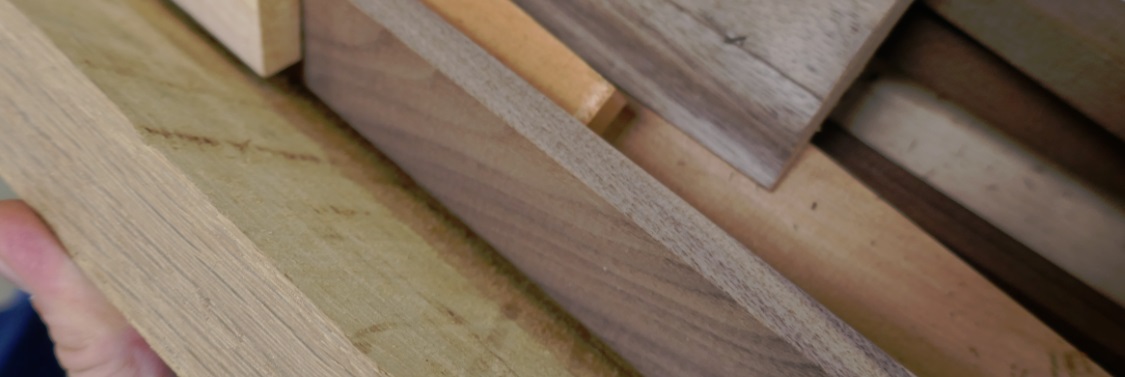 Wall anchored wooden racks are typically the best option for long term storage as wood dampens small vibrations, and wall anchoring helps to eliminate any sway in the racks. Woods like beech, redwood, maple and mahogany are best choices for wine cellar racks because they respond well to the cool, moist environment of an Ontario cellar and these woods do not impart any negative odor that may be absorbed into the bottle as the wine ages
Wall anchored wooden racks are typically the best option for long term storage as wood dampens small vibrations, and wall anchoring helps to eliminate any sway in the racks. Woods like beech, redwood, maple and mahogany are best choices for wine cellar racks because they respond well to the cool, moist environment of an Ontario cellar and these woods do not impart any negative odor that may be absorbed into the bottle as the wine ages
View our selection of wood wine racks for wine cellars and open area storage points. These wooden racks have smooth radius edge which helps prevent vintage label tearing or damage. Below is a glace at the scrap wood pile – six or eight different species of wood are frequently used at Rosehill as we customize the racks to every environment and decor.
Plan Out Proper Ventilation for Wine Cellar Before Construction
Proper ventilation is critical for long-term wine storage as it allows for sufficient air-flow to help eliminate odor build-up, or mold, which can harm wine bottle corks and labels (*although some winemakers like moldy cellars as they believe the earthy storage environment can positively impact the wine). The moldy cellar is sure to negatively impact the house or commercial building that accommodates the wine cellar.
During the wine cellar design phase, and wine cellar construction it is important to include an adequate method of ventilation and air-flow. Premium quality wine cellar cooling units offered by Rosehill are designed to provide optimal filtration and ventilation solutions for cellars of varying sizes.

